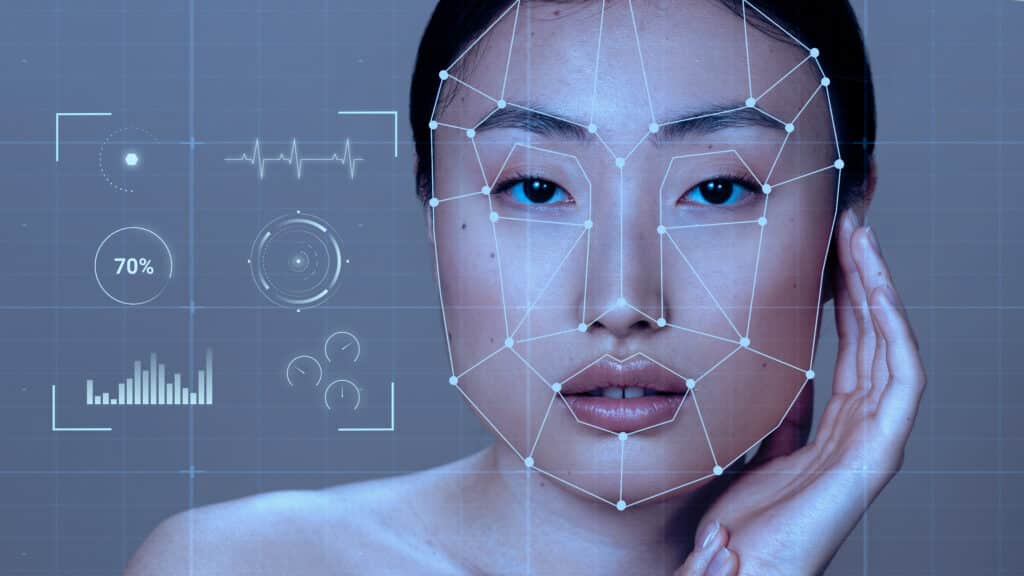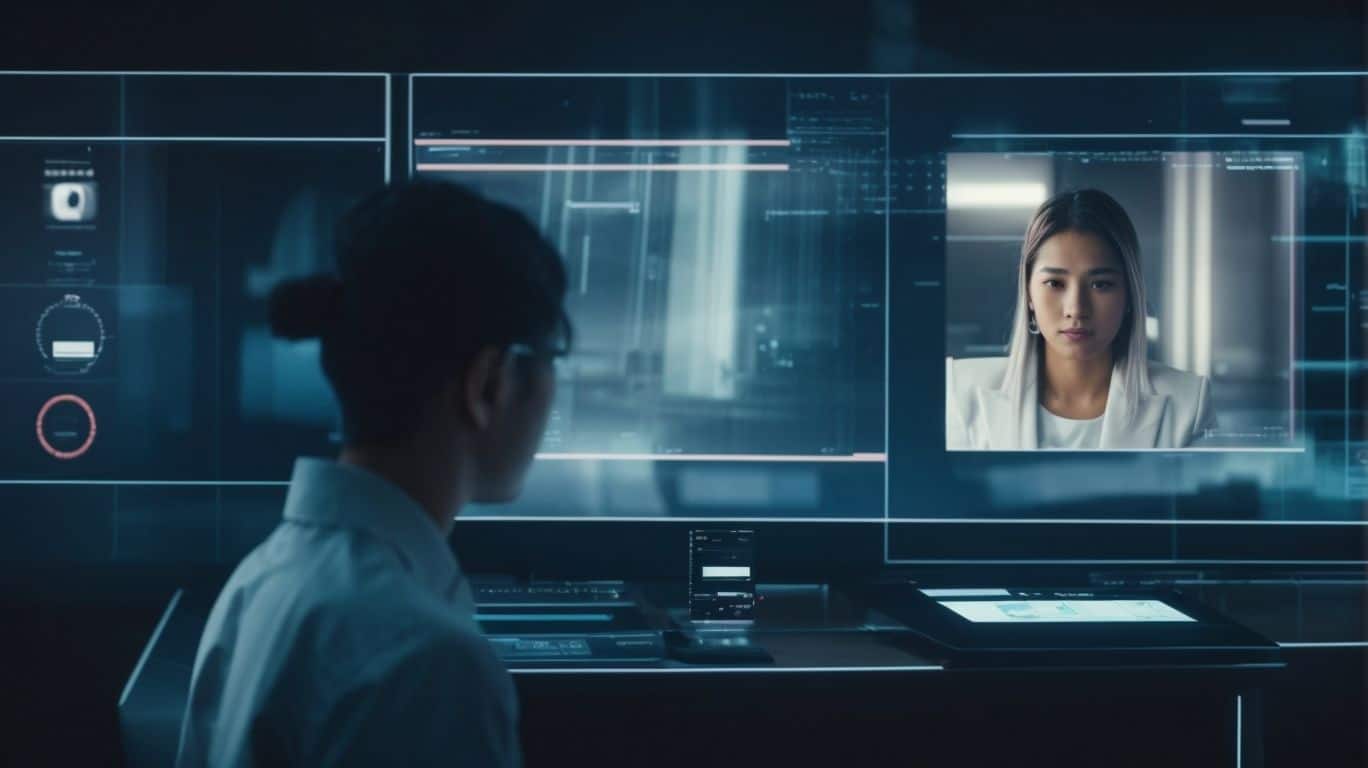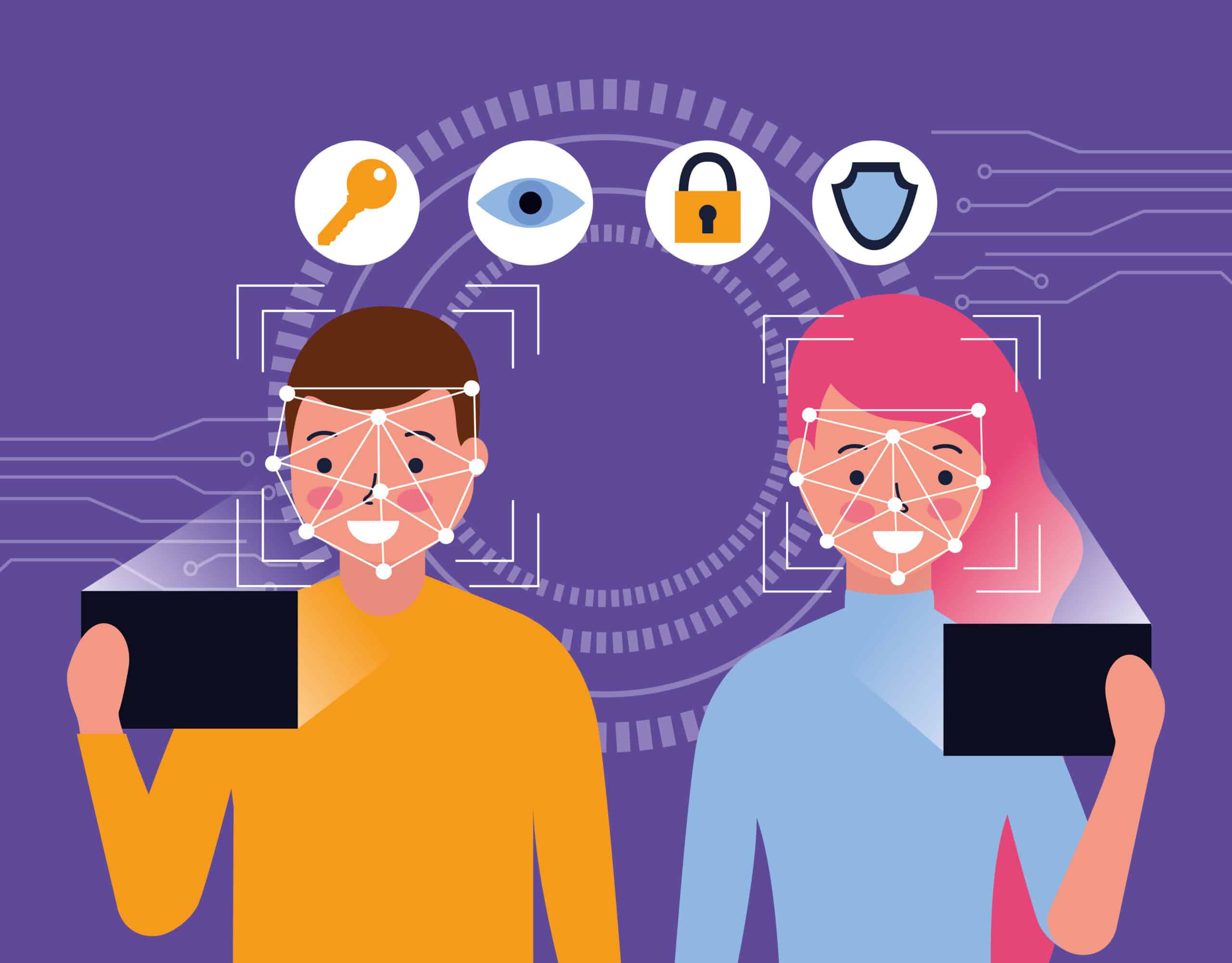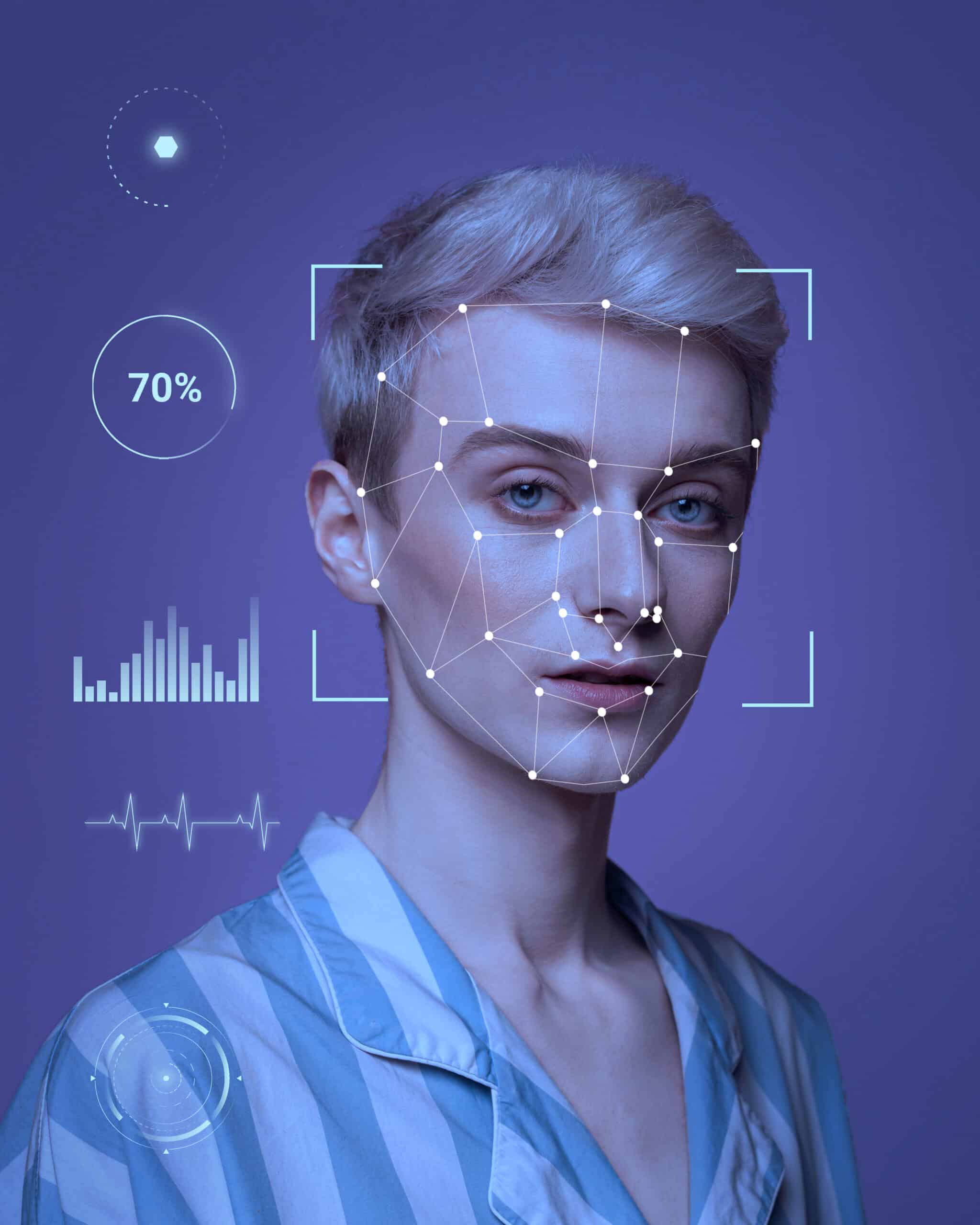Revolutionizing Security: The Advancements in Facial Recognition Identity Verification


In an increasingly digital world, the use of facial recognition technology for identity verification is becoming more prevalent.
This article will explore the ins and outs of this cutting-edge technology, discussing how it works, its advantages, concerns, current uses, and future prospects.
From increased security and fraud prevention to potential privacy issues and ethical considerations, we will delve into the complexities of facial recognition identity verification and its potential impact on various industries.
So, buckle up and get ready to dive into the future of security with facial recognition technology.
What is Facial Recognition Identity Verification Technology?
Facial Recognition Identity Verification Technology involves the use of facial features to authenticate and verify a person’s identity through advanced technological means such as biometrics.
This technology plays a vital role in enhancing personal identification and security protocols by providing a seamless and efficient way to confirm one’s identity. By analyzing unique facial characteristics, this system offers a high level of accuracy in authentication processes, making it a reliable method for ensuring data protection and preventing unauthorized access. As a part of biometric verification methods, facial recognition adds an extra layer of security to various applications, whether it’s unlocking devices, accessing secure areas, or conducting online transactions securely.
How Does Facial Recognition Identity Verification Work?
Facial Recognition Identity Verification operates by capturing and analyzing facial data to confirm a person’s identity, utilizing sophisticated algorithms for authentication and integration into security systems.
- The process begins with the initial capture of the individual’s facial features, such as the distance between the eyes, nose, and mouth. This data is then analyzed by the system to create a unique facial signature.
- The integration of this signature into access control systems allows for real-time identity verification as individuals approach secured entry points.
The implementation of facial recognition technology involves ensuring proper lighting conditions and camera angles for accurate data capture, along with continuous system testing and monitoring for optimal performance.
What Are the Advantages of Facial Recognition Identity Verification?
The benefits of Facial Recognition Identity Verification include heightened security measures, enhanced efficiency in user authentication, and significant cost savings for organizations implementing these technologies.
Facial recognition technology offers unparalleled security enhancements by providing a more reliable and accurate means of verifying individual identities, thus reducing the risk of unauthorized access to sensitive information.
The automation provided by facial recognition systems streamlines identity verification processes, resulting in improved operational efficiency and faster user onboarding. This not only saves time but also minimizes human error, reinforcing the overall cybersecurity posture of organizations.
The cost-effectiveness of facial recognition technology translates to substantial financial benefits as it reduces the need for expensive manual authentication methods and helps in preventing fraud and identity theft.
Increased Security and Fraud Prevention
One of the primary advantages of Facial Recognition Identity Verification is the heightened security it offers through advanced biometric authentication, robust access control mechanisms, and effective fraud prevention measures.
By delving deeper into the security aspects of facial recognition technology, it becomes evident that its role extends beyond mere identification. The technology not only enhances security protocols but also aids in threat detection by analyzing facial features for potential risks. Its biometric accuracy ensures that only authorized individuals gain access, thereby bolstering overall security measures. Integrating facial recognition into existing security systems can significantly fortify secure access to sensitive areas, making it a pivotal component in modern security frameworks.
Convenience and Efficiency
Facial Recognition Identity Verification offers unparalleled convenience and efficiency by streamlining user authentication processes, automating identity verification procedures, and simplifying implementation across various sectors.
This innovative technology harnesses the power of machine learning to accurately identify individuals based on their unique facial features, eliminating the need for manual verification steps. By seamlessly integrating into existing systems, facial recognition enhances user experience by reducing login times and ensuring a more secure authentication process.
Its ability to adapt to various environments and scale according to usage demands makes it a versatile solution for organizations looking to modernize their security practices. The implementation strategies of facial recognition technology are designed to align with diverse business requirements and regulatory frameworks, making it a viable option for enhancing operational efficiencies.
Cost Savings
Implementing Facial Recognition Identity Verification can result in significant cost savings for organizations by optimizing security solutions, enabling seamless integration, and enhancing monitoring capabilities to mitigate potential risks.
The efficiency of facial recognition technology translates into streamlined processes, reducing the resources and time required for identity verification procedures. By automating the identification process, organizations can allocate their workforce to more value-added tasks, saving on operational costs in the long term.
The advanced monitoring functionalities of facial recognition technology bolster security measures by providing real-time alerts for potential threats, contributing to a proactive security approach. This proactive monitoring not only enhances data protection but also minimizes the need for costly manual surveillance systems.
What Are the Concerns and Controversies Surrounding Facial Recognition Identity Verification?
Despite its benefits, Facial Recognition Identity Verification technology is embroiled in controversies due to privacy concerns, potential biases in identification, and inherent security risks associated with data protection.
Privacy advocates have raised alarm about the intrusive nature of facial recognition technology, pointing out that it enables constant surveillance systems monitoring individuals without their consent.
Concerns have been voiced regarding the accuracy of these systems, particularly in correctly identifying individuals from diverse backgrounds. The risk of biases creeping into the algorithms used for identification poses a significant threat, as it could lead to discriminatory practices.
Addressing these issues is crucial to ensure that facial recognition technology is implemented in a responsible and ethical manner.
Invasion of Privacy
One of the major concerns with Facial Recognition Identity Verification is the potential invasion of privacy through extensive surveillance systems utilizing facial biometrics for identity verification.
Such technology raises alarms regarding the protection of sensitive personal data, as it opens the door to potential breaches and identity theft.
The collection and storage of facial recognition data pose significant risks, especially if not adequately secured against cyber threats.
The widespread use of facial recognition in public spaces can result in constant monitoring, blurring the lines between security and infringement of individual privacy rights.
Ensuring stringent data security protocols and transparent usage policies becomes crucial to address these growing concerns.
Bias and Inaccuracies
Another contentious issue surrounding Facial Recognition Identity Verification is the presence of biases and inaccuracies in facial analysis, which can lead to potential threats in identification and authentication protocols.
The challenges posed by biases and inaccuracies in facial recognition technology are multifaceted and impact various critical aspects of its functionality. For instance, facial matching accuracy can be compromised, resulting in misidentification or false positives. These inaccuracies can hinder threat detection capabilities, making it difficult to accurately identify security risks based on facial data.
The integration of facial recognition technology with other systems or databases can further exacerbate these biases, propagating inaccuracies across multiple platforms and compromising the overall authentication accuracy.
Misuse of Data
The misuse of data is a significant concern with Facial Recognition Identity Verification, as security protocols, identity theft risks, and biometric authentication vulnerabilities can arise from improper handling of sensitive information.
Facial scanning technology, while offering convenience and efficiency, poses inherent security risks if not adequately safeguarded. The potential consequences of data misuse in facial recognition systems are far-reaching, impacting individuals’ privacy and security. Implementing robust security measures such as encryption, multi-factor authentication, and regular data audits is crucial to mitigate these risks. Identity theft prevention measures, like proactive monitoring for suspicious activities and strong password requirements, also play a vital role in ensuring the integrity of personal data. Incorporating secure biometric authentication practices can enhance the overall security posture of facial recognition systems.
What Are the Current Uses of Facial Recognition Identity Verification?
Facial Recognition Identity Verification is currently utilized in various sectors such as airport security, law enforcement agencies, retail environments, and banking institutions for enhanced identity verification and security measures.
This innovative technology has proven to be a game-changer in enhancing security protocols and user experience across different industries. In airport security, facial recognition is being employed to expedite the check-in process and enhance border control measures. Law enforcement agencies utilize facial recognition to identify suspects, track criminal activities, and locate missing persons more efficiently. Retail settings use this technology to personalize customer experiences, prevent theft, and analyze consumer behavior. In financial institutions, facial recognition is utilized to secure transactions, prevent fraud, and enhance user privacy by ensuring only authorized individuals access sensitive data.
Airport Security
Facial Recognition Identity Verification plays a vital role in airport security by enabling efficient threat detection, seamless integration with existing security systems, and ensuring secure access control for passengers and personnel.
By analyzing unique facial features such as the distance between the eyes, nose, and mouth, the technology can accurately identify individuals on watchlists or with suspicious behavior. This ensures that potential threats can be swiftly identified and addressed before they pose any danger.
The integration capabilities of facial recognition allow for the seamless synchronization of data with other security measures, creating a comprehensive security ecosystem. This technology also enhances access control by providing an additional layer of verification for secure transactions and restricted areas within the airport.
Law Enforcement
Law enforcement agencies leverage Facial Recognition Identity Verification to enhance surveillance systems, combat identity theft, and utilize artificial intelligence for accurate identification and tracking of individuals.
This innovative technology has revolutionized the way law enforcement operations are conducted by providing a robust tool for quick and reliable identification of suspects. Facial data collected through sophisticated algorithms has enabled agencies to swiftly locate and apprehend individuals involved in criminal activities. The integration of AI has drastically improved the accuracy and efficiency of identifying persons of interest in crowded spaces, leading to a significant boost in surveillance capabilities. By leveraging facial recognition technology, law enforcement agencies have taken a proactive approach in preventing identity theft and enhancing public safety measures.
Banking and Financial Services
The banking and financial sector employs Facial Recognition Identity Verification for secure transactions, robust identity management, and fraud prevention measures to safeguard customer accounts and enhance user authentication processes.
This cutting-edge technology has revolutionized the way organizations in the financial industry operate, offering a seamless and efficient means of verifying customer identities through advanced biometric analysis. By incorporating sophisticated access control mechanisms, facial recognition technology enhances the security of online transactions and prevents unauthorized access to sensitive information. Banks are increasingly turning to facial recognition as a key component of their identity verification methods, as it provides a reliable and convenient way to validate the identity of customers while reducing the risks associated with fraud and identity theft.
Retail and Marketing
Retail establishments utilize Facial Recognition Identity Verification for personalized marketing strategies, enhanced customer experiences through facial authentication, and precise personal identification for tailored services.
This advanced biometric technology offers retailers the ability to analyze customer demographics, preferences, and behaviors to create customized marketing campaigns that appeal to individual shoppers.
Through facial authentication, businesses can engage with customers in a more personal and interactive manner, providing a seamless shopping experience. Also,With the accurate personal identification capabilities of facial recognition, retailers can offer targeted promotions, loyalty rewards, and personalized recommendations.
The increasing use of facial recognition technology raises concerns about data privacy and security, prompting the need for stringent regulations to protect consumer information.
What is the Future of Facial Recognition Identity Verification?
The future of Facial Recognition Identity Verification holds promise with advancements in technology, increased integration with other innovative solutions, and critical considerations of ethical and legal frameworks governing its usage.
- One of the key technological advancements in facial recognition is the integration of artificial intelligence algorithms, enabling more accurate and efficient identity verification processes. This integration allows systems to adapt and learn from patterns, improving the overall performance of facial recognition technology.
- The potential synergies between facial recognition and other cutting-edge solutions like biometric authentication or blockchain technology can further enhance security measures. Alongside these developments, it’s crucial to address the ethical considerations surrounding data privacy, consent, and potential biases that may arise in the implementation of facial recognition technology.
Advancements in Technology
The future of Facial Recognition Identity Verification will witness significant technological advancements, including the integration of machine learning algorithms for enhanced accuracy and innovation in biometric data analysis.
These advancements are reshaping the landscape of security and authentication measures, as facial recognition technology continues to evolve. With the integration of machine learning, systems can adapt and learn from patterns, continually improving accuracy and efficiency. Additionally, biometric accuracy enhancements are paving the way for more precise and reliable identification methods, bolstering security protocols across various industries. Innovative approaches to data analysis, such as real-time processing and cross-referencing with other technologies, further enhance the capabilities of facial recognition systems. These developments signify a promising future for secure and convenient identity verification solutions.
Integration with Other Technologies
Facial Recognition Identity Verification will increasingly integrate with diverse technologies, enabling seamless automation, robust data protection measures, and enhanced surveillance capabilities for comprehensive security solutions.
By harnessing the collaborative potential of facial recognition technology with other innovative solutions, such as biometric authentication processes and advanced security protocols, organizations can streamline their operations and fortify their defenses against potential security threats. The synergy between facial recognition and automation benefits not only enhances efficiency but also ensures a more accurate and reliable authentication process, reducing the risk of unauthorized access.
The incorporation of stringent data protection protocols bolsters the overall security posture, safeguarding sensitive information from potential breaches. Additionally, these developments mark a significant evolution in surveillance system enhancements, paving the way for a more secure and efficient digital environment.
Ethical and Legal Considerations
The future development of Facial Recognition Identity Verification necessitates critical ethical and legal considerations surrounding privacy protection, fraud prevention mechanisms, and adherence to regulatory frameworks to ensure responsible deployment and usage.
Preserving individuals’ privacy while leveraging facial recognition technology entails implementing robust data protection measures and ensuring informed consent practices.
The prevention of fraudulent activities through secure access controls and continuous monitoring mechanisms is essential for maintaining system integrity.
Compliance with data protection laws and regulations, such as GDPR and HIPAA, is imperative to prevent misuse of personal data and uphold individuals’ rights.
Establishing transparent identity management processes and promoting accountability in the handling of sensitive information are crucial steps towards building trust and credibility in facial recognition systems.
Frequently Asked Questions
What is the future of security in terms of facial recognition identity verification technologies?
The future of security is heavily focused on the use of facial recognition identity verification technologies. With the increasing threat of identity theft and security breaches, these technologies provide a more secure and efficient way of verifying one’s identity.
How does facial recognition technology work for identity verification?
Facial recognition technology uses algorithms to analyze facial features and create a unique biometric template for each individual. Authorities use this template to verify a person’s identity by comparing it to a database of known faces.
What are the benefits of using facial recognition for identity verification?
Facial recognition identity verification offers several benefits, including increased accuracy in identification, faster verification processes, and the ability to easily integrate with existing security systems.
Are there any concerns or controversies surrounding facial recognition identity verification?
Yes, there are concerns about privacy and potential biases in facial recognition technology. Some people also question the reliability and potential misuse of this technology, leading to ongoing debates and discussions about its ethical implications.
How is facial recognition technology being implemented in different industries for identity verification?
Various industries, including banking, transportation, healthcare, and law enforcement, are currently utilizing facial recognition technology for identity verification purposes. Additionally, the retail, education, and government sectors are exploring its potential applications.
Will facial recognition eventually replace traditional forms of identity verification?
While the use of facial recognition technology for identity verification is increasing, it is unlikely to completely replace traditional forms such as ID cards or passwords. However, experts expect it to become an integral part of the overall security landscape in the future.



